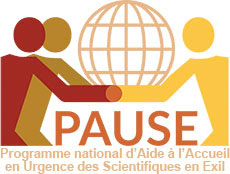Our partnerships
the sheet here
PAUSE program
 The LOCIE laboratory is financially supported by the PAUSE program (Collège de France).
The LOCIE laboratory is financially supported by the PAUSE program (Collège de France).
https://www.college-de-france.fr/site/programme-pause/index.htm
CNRS-FAPESP international cooperation with the SISEA laboratory
This project is part of a general drive to reduce energy consumption and CO2 emissions. Its aim is to develop new generations of absorption machines dedicated to air treatment, making the most of solar energy or unused thermal waste. The technical hurdles are mainly located in the heat exchangers of these machines, which have reduced compactness and efficiency. The aim of the project is to develop new multifunctional exchanger concepts using trickling films. The study will be applied to the ammonia-water pair at the SISEA laboratory of the University of Sao Paulo, and to the water-lithium bromide pair at the LOCIE laboratory of the University of Chambéry. The operating conditions should correspond to those of absorption machines.
Carlton University
A collaboration between LOCIE and the Canadian SBES (Sustainable Building Energy Systems) research team led by Professor Ian Beausoleil-Morrison of Carleton University was initiated in 2013. Ian Beausoleil-Morrison is an internationally recognized professor for his work on inter-seasonal storage. He is currently president of the international scientific association IBPSA, which brings together researchers from all over the world to work on building simulation. The overall aim of the project is to improve understanding and modelling of coupled heat and mass transfers in the case of sensitive energy storage in underground reservoirs, and to set up the simulation tools needed to study this behaviour. The aim is to make a significant contribution to reducing the energy requirements of buildings. A cotutelle thesis will be launched in 2013-2014.
GDR Trickling and sheared films - GDR 3373
The GDR FILMS was created in January 2010. The GDR is a research group funded by the CNRS (INSIS) focusing on the themes of runoff, liquid films flowing by gravity and/or sheared by a gas flow and transfer. These types of flows are encountered in process engineering and/or chemical engineering, in the automotive industry, the aerospace and aeronautical transport industry (water ingestion in engines, presence of liquid films in combustion chambers, alumina deposits in Ariane V thrusters, etc.), the construction industry and the steel industry, and motivate significant fundamental and applied research. The GDR brings together 23 teams (14 from INSIS-affiliated laboratories, 7 from outside, including 4 from industry and 2 from Belgium) with backgrounds ranging from the physical chemistry of interfaces to chemical engineering, mechanics, numerical analysis, physical hydrodynamics and applied mathematics.
